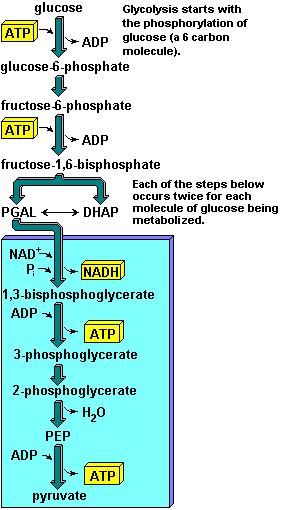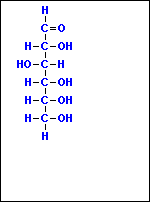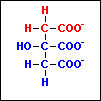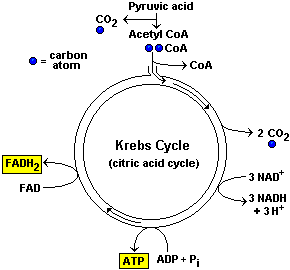| The two pyruvate molecules that resulted from glycolysis then go through the Krebs or Tricarboxylic acid (TCA) cycle. First,
they are converted into acetyl CoA, and then begin as citrate, a six-carbon molecule with three carboxylic acid groups (note the
name tricarboxylic acid). A series of eight steps is performed, and overall (per pyruvate molecule) three carbons are lost as CO2, 3
NAD+ molecules are converted into NADH/H+, one ADP is converted to ATP through substrate level phosphorylation,
and one FAD molecule is converted into FADH2. This translates into a maximum net gain of 32 ATP, after all the
NADH/H+ and the FADH2 molecules are cashed in in the Electron Transport Phosphorylation.
|




